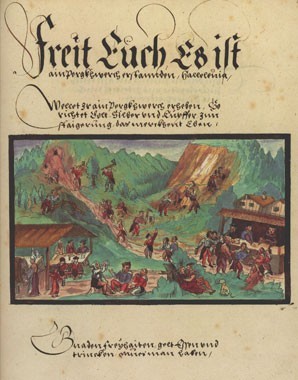White gold – The Habsburgs’ salt monopoly
Salt was a good source of income. The Habsburgs knew this too; they created a monopoly in salt for themselves and tried to squeeze out competitors.
In the early modern period salt was used for many different purposes: to season food, to preserve meat and fish, to produce cheese and butter and to feed to animals. It also played an important role in numerous trades, for example in tanning and in the production of glass.
The owners of salt-works could count on a steady demand for salt. The Habsburgs were also good at exploiting the salt deposits to be found in their territories, with the result that the salt industry became one of their most important sources of income. In order to make sure that they kept this income for themselves, they established a monopoly in the production of salt at the end of the fifteenth century and later demonstratively extended this to the whole salt trade. Their strongest competitors were the salt-works at Reichenhall in Bavaria and at Hallein in the Archbishopric of Salzburg, and the Habsburgs tried to keep them out of what they regarded as their markets, which in turn they tried to expand. In 1508 Maximilian I even went so far as to ban the sale of salt from Bavaria and Salzburg in his territories. The ban also applied to the ‘saltless’ Kingdom of Bohemia, inherited in 1526, which opened up a promising new market. When it came to extending the monopoly to trade in the ‘white gold’, there were times when it was forbidden to transport salt from the Styrian works in Aussee to Upper and Lower Austria because salt could still be traded freely in Styria. People living in the region had recourse to smuggling, even though there were severe penalties for this.
Revenue from the salt monopoly went up continuously as a result of rising demand and price increases. At the beginning of the eighteenth century it was some 1.7 million gulden per year that flowed into the Habsburg coffers, while barely sixty years later it was just under nine million gulden.
















